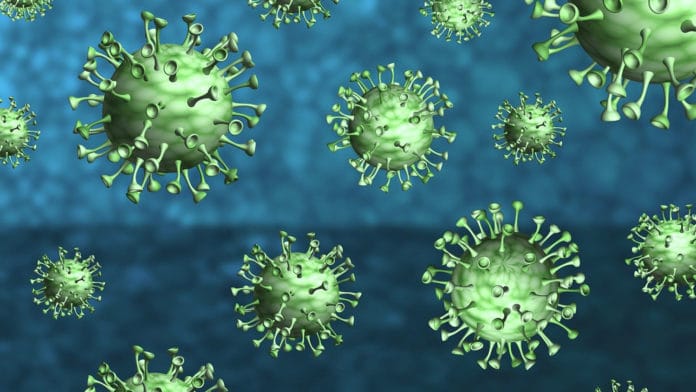Many studies have examined the impact of SARS-CoV-2 variants on neutralizing antibody activity. It thus results in variants of concern (VOCs) with increased transmissibility or virulence continuing to emerge.
A new variant of concern, dubbed Omicron, entered the scene. This variant contains various antibody-evading mutations. As of Dec. 1, Omicron has been identified in 25 countries in Africa, Asia, Australia, Europe, and North and South America. The list of countries is growing daily.
To predict the future evolutionary activity of SARS-CoV-2, scientists at Harvard Medical School identified several likely mutations that would allow the virus to evade immune defenses.
Scientists estimated how the virus-transformed itself next by following clues in the chemical and physical structure of the virus. They studied rare mutations found in immunocompromised individuals and a global database of virus sequences.
In lab-based studies using noninfectious virus-like particles, the scientists found combinations of multiple complex mutations that would allow the virus to infect human cells while reducing or neutralizing the protective power of antibodies.
Scientists mainly focused on the part of the coronavirus’ spike protein called the receptor-binding domain. The virus uses this protein to get into human cells. The spike protein allows the virus to enter human cells, where it initiates self-replication and, eventually, leads to infection.
Most antibodies work by locking the same regions on the virus’s spike protein receptor-binding domain to block it from getting into cells and causing infection.
Every time a new copy of a virus is made, there’s a chance that a copy error —probably the introduction of a genetic typo. As a virus encounters selective pressure from the host’s immune system, copy errors that allow the virus to avoid being blocked by existing antibodies have a better chance of surviving and continuing to replicate.
Mutations that allow a virus to evade antibodies in this way are known as escape mutations.
Scientists found by developing several simultaneous escape mutations, the virus regains its ability to connect to the receptors it needs to infect a human cell.
Scientists tested this by building pseudotypes, lab-made stand-ins for a virus constructed by combining harmless, noninfectious virus-like particles with pieces of the SARS-CoV-2 spike protein containing the suspected escape mutations. These pseudotypes contain up to seven escape mutations more resistant to neutralization by therapeutic antibodies and serum from mRNA vaccine recipients.
Such complex evolution was not observed in widespread strains of the virus when scientists began experiments.
Senior author Jonathan Abraham, assistant professor of microbiology in the Blavatnik Institute at HMS, said, “But with the emergence of the Omicron variant, this level of complex mutation in the receptor-binding domain is no longer hypothetical. The Delta variant had only two mutations in its receptor-binding domain, but the pseudotypes the team studied had up to seven mutations, and Omicron appears to have 15.”
Scientists also observed how antibodies would bind to spike proteins containing escape mutations. Some mutations enabled the pseudotypes to completely evade therapeutic antibodies, including those found in monoclonal antibody cocktail therapies.
They found one antibody that could neutralize all of the tested variants effectively. However, they also noted that the virus would evade that antibody if the spike protein developed a single mutation that adds a sugar molecule at the location where the antibody binds to the virus. That, in essence, would prevent the antibody from doing its job.
Scientists noted, “In rare instances, circulating strains of SARS-CoV-2 have been found to gain this mutation. When this happens, it is likely the result of selective pressure from the immune system. Understanding the role of this rare mutation, they added, is critical to being better prepared before it emerges as part of dominant strains.”
While the scientists didn’t directly study the pseudotype virus’ ability to get away from natural infection, discoveries from the group’s past work with variations conveying fewer changes propose that these fresher, exceptionally transformed variations would likewise capably avoid antibodies obtained through natural infection.
In another experiment, scientists exposed pseudotypes to blood serum from individuals who had received an mRNA vaccine. For some highly mutated variants, serum from single-dose vaccine recipients completely lost the ability to neutralize the virus. Scientists obtained the samples from people who had received a second dose of vaccine, the vaccine retained at least some effectiveness against all variants, including some extensively mutated pseudotypes.
Scientists noted, “Analysis suggests that repeated immunization even with the original spike protein antigen may be critical to countering highly mutated SARS-CoV-2 spike protein variants.”
Abraham said, “This virus is a shape-shifter. The great structural flexibility we saw in the SARS-CoV-2 spike protein suggests that Omicron is not likely to be the end of the story for this virus.”
Journal Reference
- Katherine G. Nabel et al. Structural basis for continued antibody evasion by the SARS-CoV-2 receptor binding domain. DOI: 10.1126/science.abl6251
